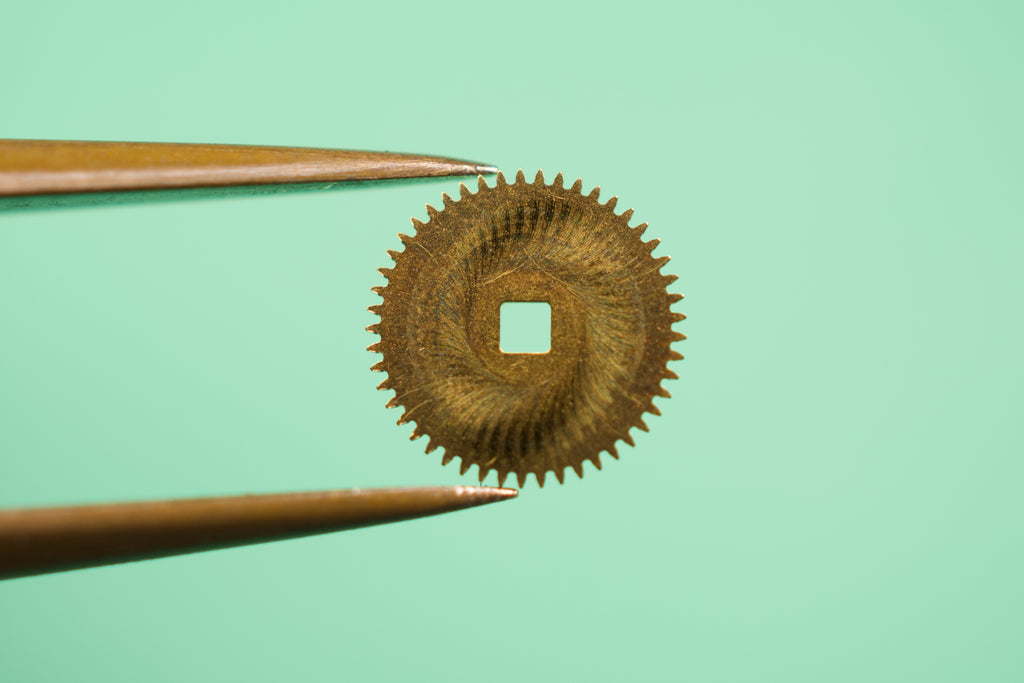From the Bench: Accidental Decoration

Decoration, or “finissage” is an essential element of traditional high-end watchmaking. There are many ways to finish components, but bridges are typically grained, solarized, striped or frosted. Likewise, wheels are often polished, grained, or for certain wheels, “snailed.”

"Snailing" is a type of finishing technique (seen in the image above) where the watchmaker decorates the wheel with a circular pattern.
In fact, when it comes to ratchet wheels (the wheel that winds the mainspring) snailing is the most traditional finish of all.

The ratchet wheel in the ETA 2892 and Sellita SW300 is polished, though you wouldn’t know it by looking through the caseback—the ratchet wheel is entirely hidden underneath the barrel bridge, which is part of why the movement is able to be so thin.
Polishing is an absolutely acceptable finish, especially for a component that is never seen, but who among us doesn’t strive for greatness? The 2892/SW300 ratchet wheel isn’t immune from the impulse to rise above its station, and will often give itself an ad-hoc snail finish in use.
Snailing is achieved by grinding an offset radius into the wheel as it turns in the opposite direction, creating a series of curling arcs that spiral away from the center in a graceful S-curve. Typically this is done with a brass lap, coated or charged with abrasives.

The 2892 self-finishes its wheel with the ratchet wheel driving wheel, a brass wheel that sits directly above it, winding the mainspring slowly at the slow-and-high-torque end of the automatic system.

There’s not much space between the wheels, and in some positions (particularly dial-down), the driving wheel can rest atop the ratchet wheel. Since the wheels directly turn each other, they must naturally turn opposite directions. Contact plus rotation… Et voila! Accidental snailing.

This kind of interference wear isn’t uncommon in watches, nor is it a sign of damage. The pattern is less “wear” than an indication of use. Still, it’s best to avoid risking worse grooves, so at service time, I’ll just flip it.
